Weilin Zhao
FR-Spec: Accelerating Large-Vocabulary Language Models via Frequency-Ranked Speculative Sampling
Feb 20, 2025Abstract:Speculative sampling has emerged as an important technique for accelerating the auto-regressive generation process of large language models (LLMs) by utilizing a draft-then-verify mechanism to produce multiple tokens per forward pass. While state-of-the-art speculative sampling methods use only a single layer and a language modeling (LM) head as the draft model to achieve impressive layer compression, their efficiency gains are substantially reduced for large-vocabulary LLMs, such as Llama-3-8B with a vocabulary of 128k tokens. To address this, we present FR-Spec, a frequency-ranked speculative sampling framework that optimizes draft candidate selection through vocabulary space compression. By constraining the draft search to a frequency-prioritized token subset, our method reduces LM Head computation overhead by 75% while ensuring the equivalence of the final output distribution. Experiments across multiple datasets demonstrate an average of 1.12$\times$ speedup over the state-of-the-art speculative sampling method EAGLE-2.
APB: Accelerating Distributed Long-Context Inference by Passing Compressed Context Blocks across GPUs
Feb 17, 2025Abstract:While long-context inference is crucial for advancing large language model (LLM) applications, its prefill speed remains a significant bottleneck. Current approaches, including sequence parallelism strategies and compute reduction through approximate attention mechanisms, still fall short of delivering optimal inference efficiency. This hinders scaling the inputs to longer sequences and processing long-context queries in a timely manner. To address this, we introduce APB, an efficient long-context inference framework that leverages multi-host approximate attention to enhance prefill speed by reducing compute and enhancing parallelism simultaneously. APB introduces a communication mechanism for essential key-value pairs within a sequence parallelism framework, enabling a faster inference speed while maintaining task performance. We implement APB by incorporating a tailored FlashAttn kernel alongside optimized distribution strategies, supporting diverse models and parallelism configurations. APB achieves speedups of up to 9.2x, 4.2x, and 1.6x compared with FlashAttn, RingAttn, and StarAttn, respectively, without any observable task performance degradation. We provide the implementation and experiment code of APB in https://github.com/thunlp/APB.
Densing Law of LLMs
Dec 05, 2024



Abstract:Large Language Models (LLMs) have emerged as a milestone in artificial intelligence, and their performance can improve as the model size increases. However, this scaling brings great challenges to training and inference efficiency, particularly for deploying LLMs in resource-constrained environments, and the scaling trend is becoming increasingly unsustainable. This paper introduces the concept of ``\textit{capacity density}'' as a new metric to evaluate the quality of the LLMs across different scales and describes the trend of LLMs in terms of both effectiveness and efficiency. To calculate the capacity density of a given target LLM, we first introduce a set of reference models and develop a scaling law to predict the downstream performance of these reference models based on their parameter sizes. We then define the \textit{effective parameter size} of the target LLM as the parameter size required by a reference model to achieve equivalent performance, and formalize the capacity density as the ratio of the effective parameter size to the actual parameter size of the target LLM. Capacity density provides a unified framework for assessing both model effectiveness and efficiency. Our further analysis of recent open-source base LLMs reveals an empirical law (the densing law)that the capacity density of LLMs grows exponentially over time. More specifically, using some widely used benchmarks for evaluation, the capacity density of LLMs doubles approximately every three months. The law provides new perspectives to guide future LLM development, emphasizing the importance of improving capacity density to achieve optimal results with minimal computational overhead.
Enabling Real-Time Conversations with Minimal Training Costs
Sep 18, 2024Abstract:Large language models (LLMs) have demonstrated the ability to improve human efficiency through conversational interactions. Conventional LLM-powered dialogue systems, operating on a turn-based paradigm, preclude real-time interaction during response generation. To address this limitation, researchers have proposed duplex models. These models can dynamically adapt to user input, facilitating real-time interactive feedback. However, these methods typically require substantial computational resources to acquire the ability. To reduce overhead, this paper presents a new duplex decoding approach that enhances LLMs with duplex ability, requiring minimal additional training. Specifically, our method employs parallel decoding of queries and responses in conversations, effectively implementing a channel-division-multiplexing decoding strategy. Experimental results indicate that our proposed method significantly enhances the naturalness and human-likeness of user-AI interactions with minimal training costs.
Configurable Foundation Models: Building LLMs from a Modular Perspective
Sep 04, 2024



Abstract:Advancements in LLMs have recently unveiled challenges tied to computational efficiency and continual scalability due to their requirements of huge parameters, making the applications and evolution of these models on devices with limited computation resources and scenarios requiring various abilities increasingly cumbersome. Inspired by modularity within the human brain, there is a growing tendency to decompose LLMs into numerous functional modules, allowing for inference with part of modules and dynamic assembly of modules to tackle complex tasks, such as mixture-of-experts. To highlight the inherent efficiency and composability of the modular approach, we coin the term brick to represent each functional module, designating the modularized structure as configurable foundation models. In this paper, we offer a comprehensive overview and investigation of the construction, utilization, and limitation of configurable foundation models. We first formalize modules into emergent bricks - functional neuron partitions that emerge during the pre-training phase, and customized bricks - bricks constructed via additional post-training to improve the capabilities and knowledge of LLMs. Based on diverse functional bricks, we further present four brick-oriented operations: retrieval and routing, merging, updating, and growing. These operations allow for dynamic configuration of LLMs based on instructions to handle complex tasks. To verify our perspective, we conduct an empirical analysis on widely-used LLMs. We find that the FFN layers follow modular patterns with functional specialization of neurons and functional neuron partitions. Finally, we highlight several open issues and directions for future research. Overall, this paper aims to offer a fresh modular perspective on existing LLM research and inspire the future creation of more efficient and scalable foundational models.
MiniCPM-V: A GPT-4V Level MLLM on Your Phone
Aug 03, 2024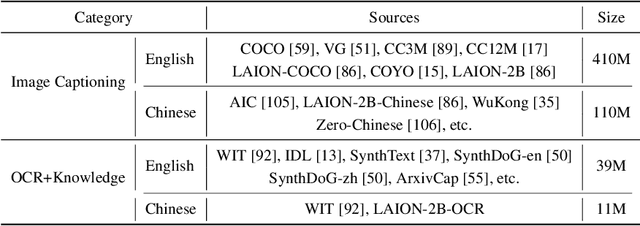
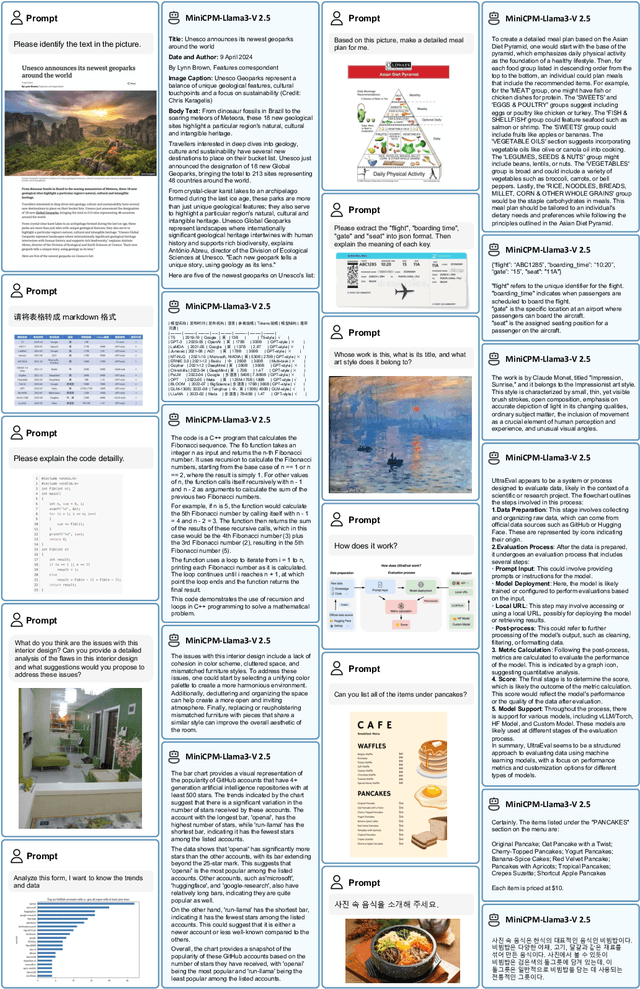
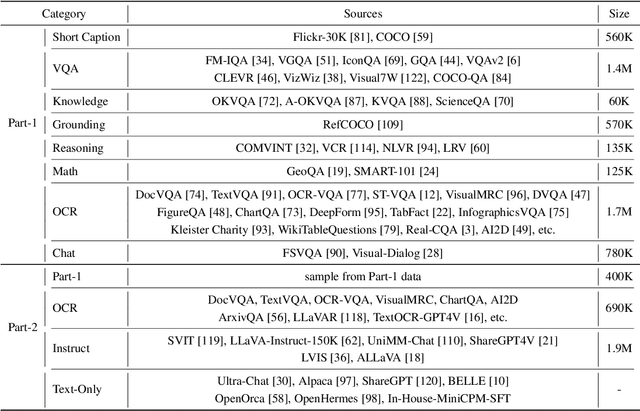
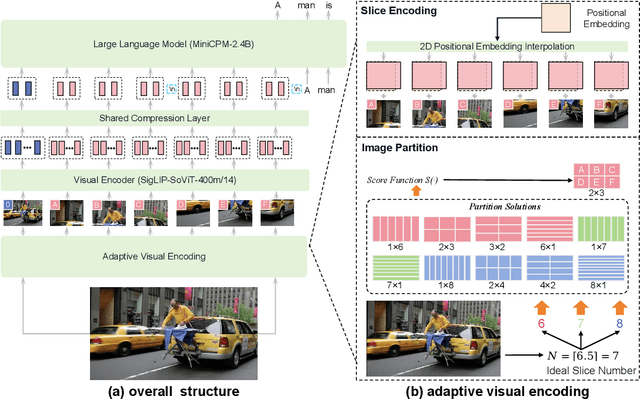
Abstract:The recent surge of Multimodal Large Language Models (MLLMs) has fundamentally reshaped the landscape of AI research and industry, shedding light on a promising path toward the next AI milestone. However, significant challenges remain preventing MLLMs from being practical in real-world applications. The most notable challenge comes from the huge cost of running an MLLM with a massive number of parameters and extensive computation. As a result, most MLLMs need to be deployed on high-performing cloud servers, which greatly limits their application scopes such as mobile, offline, energy-sensitive, and privacy-protective scenarios. In this work, we present MiniCPM-V, a series of efficient MLLMs deployable on end-side devices. By integrating the latest MLLM techniques in architecture, pretraining and alignment, the latest MiniCPM-Llama3-V 2.5 has several notable features: (1) Strong performance, outperforming GPT-4V-1106, Gemini Pro and Claude 3 on OpenCompass, a comprehensive evaluation over 11 popular benchmarks, (2) strong OCR capability and 1.8M pixel high-resolution image perception at any aspect ratio, (3) trustworthy behavior with low hallucination rates, (4) multilingual support for 30+ languages, and (5) efficient deployment on mobile phones. More importantly, MiniCPM-V can be viewed as a representative example of a promising trend: The model sizes for achieving usable (e.g., GPT-4V) level performance are rapidly decreasing, along with the fast growth of end-side computation capacity. This jointly shows that GPT-4V level MLLMs deployed on end devices are becoming increasingly possible, unlocking a wider spectrum of real-world AI applications in the near future.
Beyond the Turn-Based Game: Enabling Real-Time Conversations with Duplex Models
Jun 22, 2024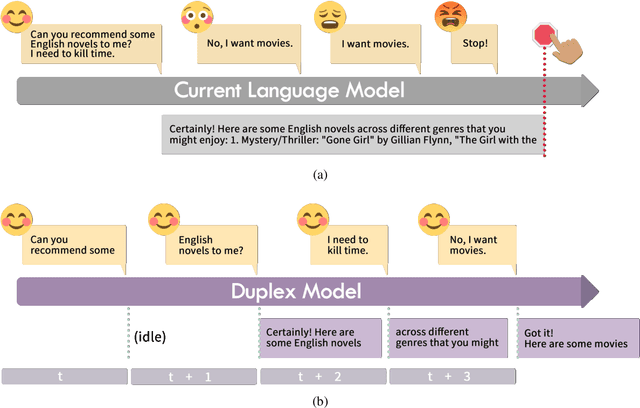
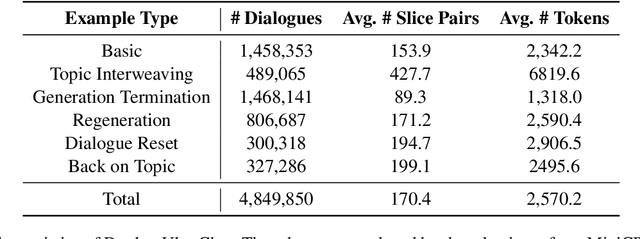
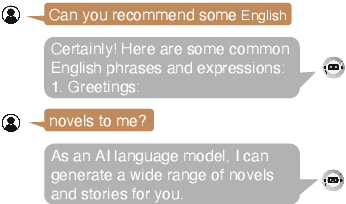
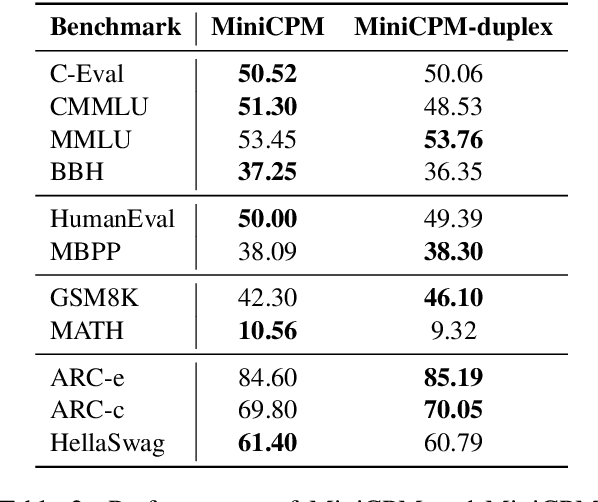
Abstract:As large language models (LLMs) increasingly permeate daily lives, there is a growing demand for real-time interactions that mirror human conversations. Traditional turn-based chat systems driven by LLMs prevent users from verbally interacting with the system while it is generating responses. To overcome these limitations, we adapt existing LLMs to \textit{duplex models} so that these LLMs can listen for users while generating output and dynamically adjust themselves to provide users with instant feedback. % such as in response to interruptions. Specifically, we divide the queries and responses of conversations into several time slices and then adopt a time-division-multiplexing (TDM) encoding-decoding strategy to pseudo-simultaneously process these slices. Furthermore, to make LLMs proficient enough to handle real-time conversations, we build a fine-tuning dataset consisting of alternating time slices of queries and responses as well as covering typical feedback types in instantaneous interactions. Our experiments show that although the queries and responses of conversations are segmented into incomplete slices for processing, LLMs can preserve their original performance on standard benchmarks with a few fine-tuning steps on our dataset. Automatic and human evaluation indicate that duplex models make user-AI interactions more natural and human-like, and greatly improve user satisfaction compared to vanilla LLMs. Our duplex model and dataset will be released.
MiniCPM: Unveiling the Potential of Small Language Models with Scalable Training Strategies
Apr 09, 2024


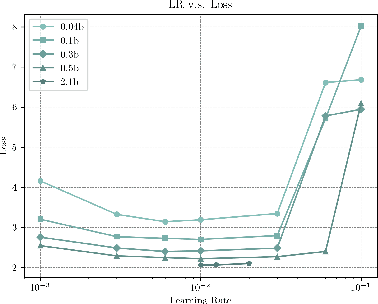
Abstract:The burgeoning interest in developing Large Language Models (LLMs) with up to trillion parameters has been met with concerns regarding resource efficiency and practical expense, particularly given the immense cost of experimentation. This scenario underscores the importance of exploring the potential of Small Language Models (SLMs) as a resource-efficient alternative. In this context, we introduce MiniCPM, specifically the 1.2B and 2.4B non-embedding parameter variants, not only excel in their respective categories but also demonstrate capabilities on par with 7B-13B LLMs. While focusing on SLMs, our approach exhibits scalability in both model and data dimensions for future LLM research. Regarding model scaling, we employ extensive model wind tunnel experiments for stable and optimal scaling. For data scaling, we introduce a Warmup-Stable-Decay (WSD) learning rate scheduler (LRS), conducive to continuous training and domain adaptation. We present an in-depth analysis of the intriguing training dynamics that occurred in the WSD LRS. With WSD LRS, we are now able to efficiently study data-model scaling law without extensive retraining experiments on both axes of model and data, from which we derive the much higher compute optimal data-model ratio than Chinchilla Optimal. Additionally, we introduce MiniCPM family, including MiniCPM-DPO, MiniCPM-MoE and MiniCPM-128K, whose excellent performance further cementing MiniCPM's foundation in diverse SLM applications. MiniCPM models are available publicly at https://github.com/OpenBMB/MiniCPM .
Mastering Text, Code and Math Simultaneously via Fusing Highly Specialized Language Models
Mar 18, 2024Abstract:Underlying data distributions of natural language, programming code, and mathematical symbols vary vastly, presenting a complex challenge for large language models (LLMs) that strive to achieve high performance across all three domains simultaneously. Achieving a very high level of proficiency for an LLM within a specific domain often requires extensive training with relevant corpora, which is typically accompanied by a sacrifice in performance in other domains. In this paper, we propose to fuse models that are already highly-specialized directly. The proposed fusing framework, UltraFuser, consists of three distinct specialists that are already sufficiently trained on language, coding, and mathematics. A token-level gating mechanism is introduced to blend the specialists' outputs. A two-stage training strategy accompanied by balanced sampling is designed to ensure stability. To effectively train the fused model, we further construct a high-quality supervised instruction tuning dataset, UltraChat 2, which includes text, code, and mathematical content. This dataset comprises approximately 300,000 instructions and covers a wide range of topics in each domain. Experiments show that our model could simultaneously achieve mastery of the three crucial domains.
BurstAttention: An Efficient Distributed Attention Framework for Extremely Long Sequences
Mar 14, 2024


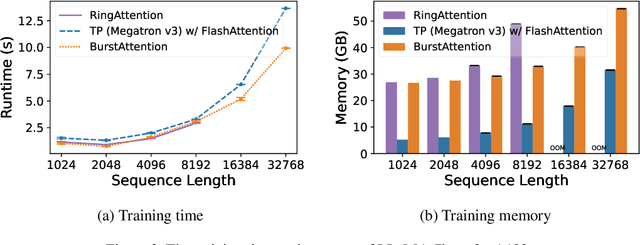
Abstract:Effective attention modules have played a crucial role in the success of Transformer-based large language models (LLMs), but the quadratic time and memory complexities of these attention modules also pose a challenge when processing long sequences. One potential solution for the long sequence problem is to utilize distributed clusters to parallelize the computation of attention modules across multiple devices (e.g., GPUs). However, adopting a distributed approach inevitably introduces extra memory overheads to store local attention results and incurs additional communication costs to aggregate local results into global ones. In this paper, we propose a distributed attention framework named ``BurstAttention'' to optimize memory access and communication operations at both the global cluster and local device levels. In our experiments, we compare BurstAttention with other competitive distributed attention solutions for long sequence processing. The experimental results under different length settings demonstrate that BurstAttention offers significant advantages for processing long sequences compared with these competitive baselines, reducing 40% communication overheads and achieving 2 X speedup during training 32K sequence length on 8 X A100.
 Add to Chrome
Add to Chrome Add to Firefox
Add to Firefox Add to Edge
Add to Edge